Mentor sentences have the power to be the bridge between reading instruction and writing instruction. A glue that can hold everything together and make it cohesive. If you have held back on teaching grammar to your students, I don’t blame you. Maybe it is intimidating because it’s something you feel you don’t have enough knowledge on. Maybe you investigated how to teach grammar, and you got lost in the debate about the best way to teach it to students.
Regardless of why grammar instruction is lacking in your classroom, my hope is this blog post gives you at least one quick, tangible idea of how mentor sentences can help you incorporate grammar.
What exactly is a mentor sentence? A mentor sentence is a sentence from a novel, informational text, piece of student/teacher writing, etc. that has qualities and characteristics you want students to notice, learn from, and imitate in their own writing.
If grammar instruction has looked like a worksheet that drills students on a specific grammar concept without any real-life application, using mentor sentences is very different from that. Mentor sentences bring grammar out of isolation (it was never meant to be there in the first place). Three things you should know about using mentor sentences for grammar instruction before I give ideas for instructional uses are:
- Mentor Sentence activities work great as a class starter. If you can reserve the first 5-15 minutes of a class period and use mentor sentences as a class starter, they make a perfect connection with reading units because you can use mentor sentences from books students are reading or writing units because the whole point of students studying mentor sentences are to apply what they learn to their own writing.
- Mentor sentences work best if students have a grammar reference tool like this one linked here. Since mentor sentences don’t focus in on just one grammar concept, it’s best for students to be able to look at multiple learning points from one mentor sentence. It’s not fair to expect students to memorize and know every single grammar concept. As adults, we have this thing called Google that we use all the time when we don’t have the immediate answer. Teaching students how to use a reference tool to navigate learning is an important life skill.
- Mentor sentences can get a little messy. The nice thing about grammar worksheets that teach grammar concepts in isolation is that the sentences on these worksheets are made up to fit in a perfect box to teach the grammar concept for that assignment. Mentor sentences don’t fit in a perfect box all the time, but that’s what makes them a better representation of what students will experience as readers and writers.
Now that we’re all on the same page, let’s explore six ways you can start using mentor sentences in your classroom.
Idea One: What Do You Notice?
This first idea takes very little preparation on the teacher’s part. Find a sentence from a common text students are reading. If you are doing an Interactive Read Aloud, I love to pick a sentence from the reading students will hear that day to give them a little preview of the book and get them excited to find out what is going to happen next in the reading. To use this method, I also recommend making an anchor chart like the one pictured below to help direct students with the types of “noticings” they might have.
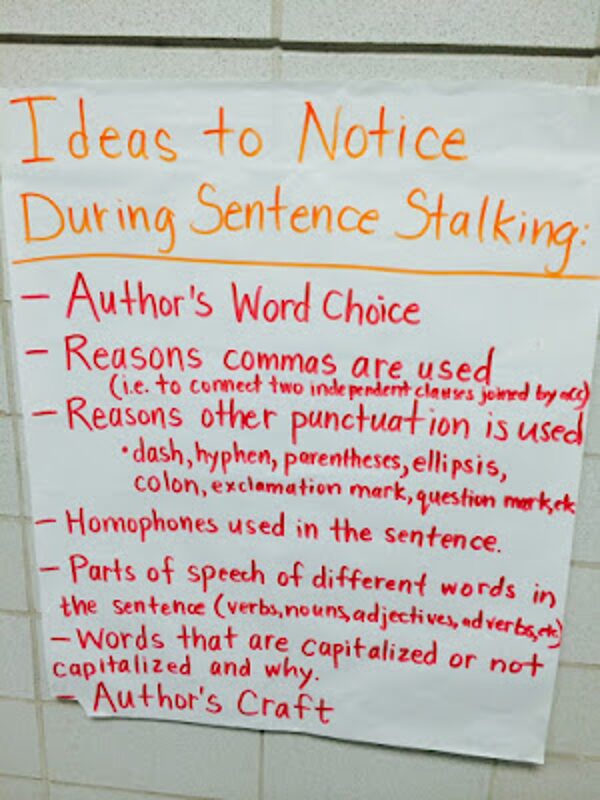
The first time you try this, you might have students write down three things they notice about the sentence, and they can build up to five or more noticings over time. After giving students 2-3 minutes to write down what they notice, have them turn and talk and share one idea from their list with a partner. Finally, share out as a whole class and make a list of the different ideas students came up with. Take a moment with each new idea students share to explain the grammar concept within the mentor sentence.
Idea Two: Focus Questions
The next idea is a spin on the first idea shared. The preparation is the same. The teacher selects one mentor sentence from students’ common reading. This could be from a whole class novel, interactive read aloud, article, etc. The teacher then writes grammar-focused questions based on the mentor sentence that students answer. An example of what this looks like is pictured below.
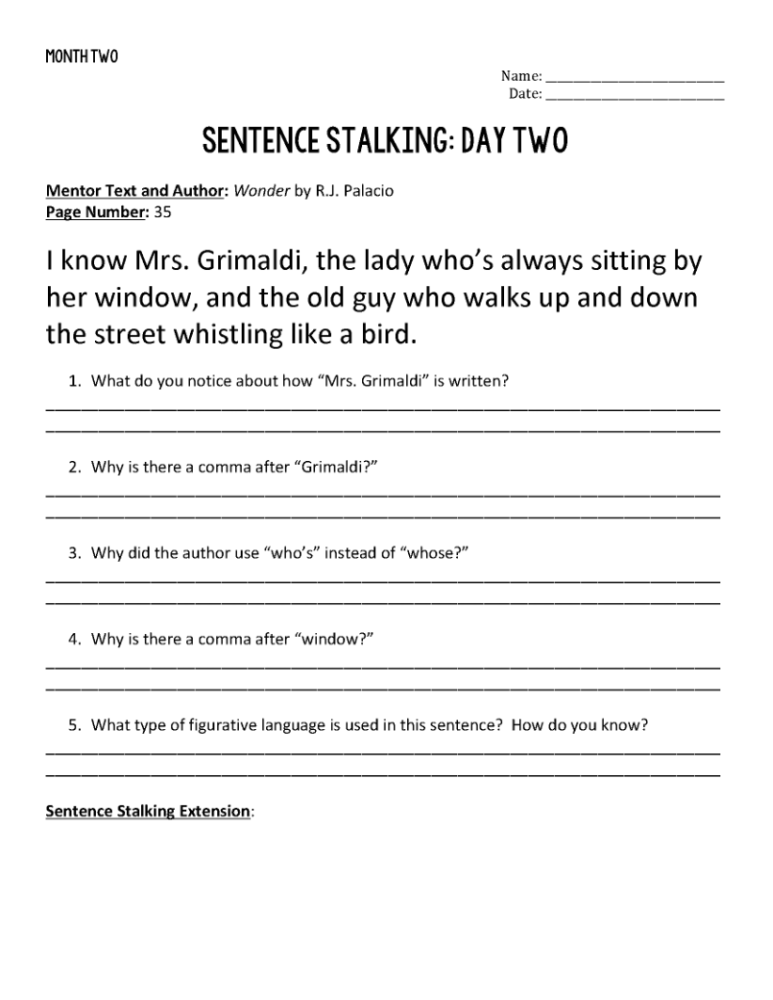
Start by giving students 5-6 minutes to answer the questions. You could also do one of the questions together as a class and then ask students to answer the rest. Next, have students share what they wrote down for a specific question with a partner. Finally, go through the questions as a class and give the teaching point associated with each question. The teaching point could sound something like what is highlighted for each question in the picture below.
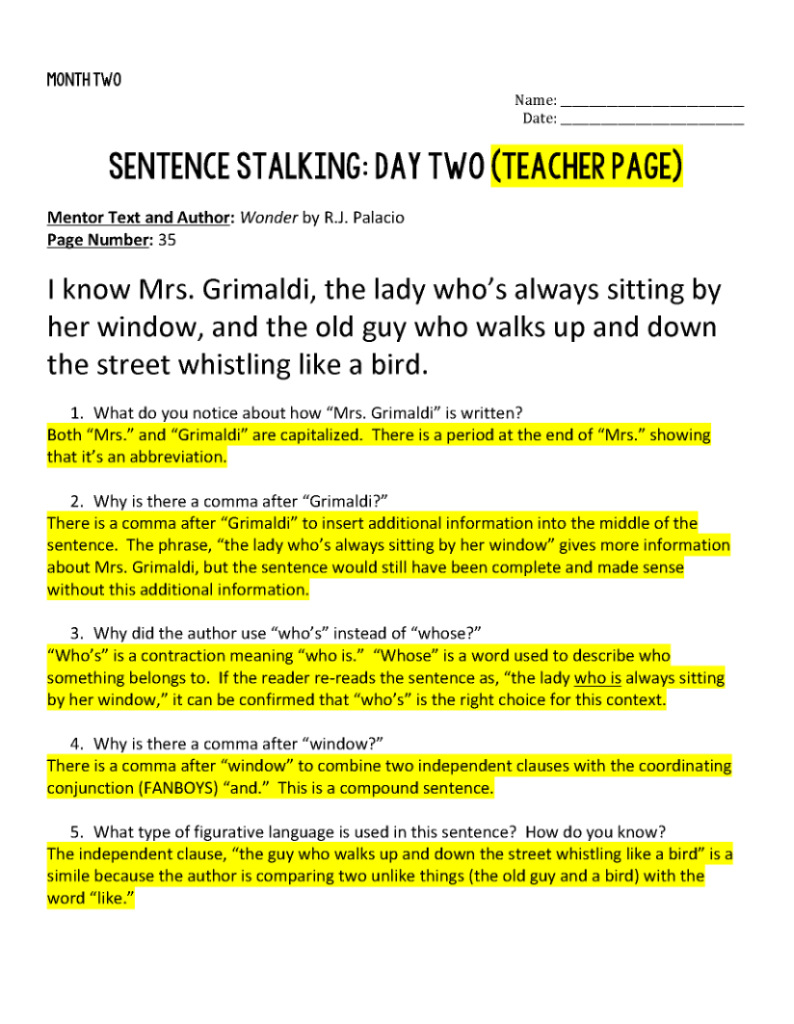
If this concept interests you, but you’re not sure about doing all the prep work for it, I do have 9 months (180 days) of Sentence Stalking prepared with mentor sentences from popular middle school novels. To learn more, you can check out the year-long bundle, a single month, or Sentence Stalking by novel. These resources also come as partner interactive activities and as self-grading Google Forms. The possibilities are endless on how to incorporate this resource into your middle school ELA classroom.
Idea Three: Specific Grammar Concept
Mentor sentences can also work great if you’re wanting to teach students about a specific grammar concept. One that really helps students with their writing is learning about commas. If they understand where commas go in writing and why, then they understand a lot about sentence types and parts of speech. Here is a week-long structure I’ve used to teach a specific grammar concept:
Monday: Have students study a mentor sentence that contains the grammar rule and write down what they notice about it.
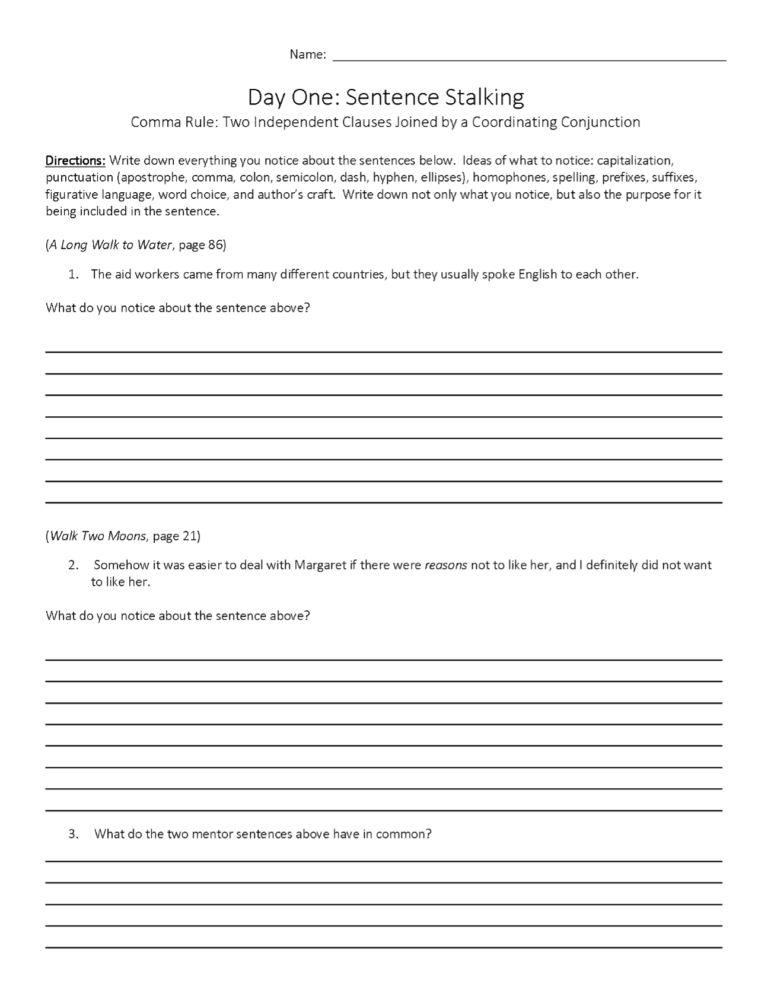
Tuesday: Explicitly teach the grammar concept to students and use mentor sentences to illustrate your teaching point.
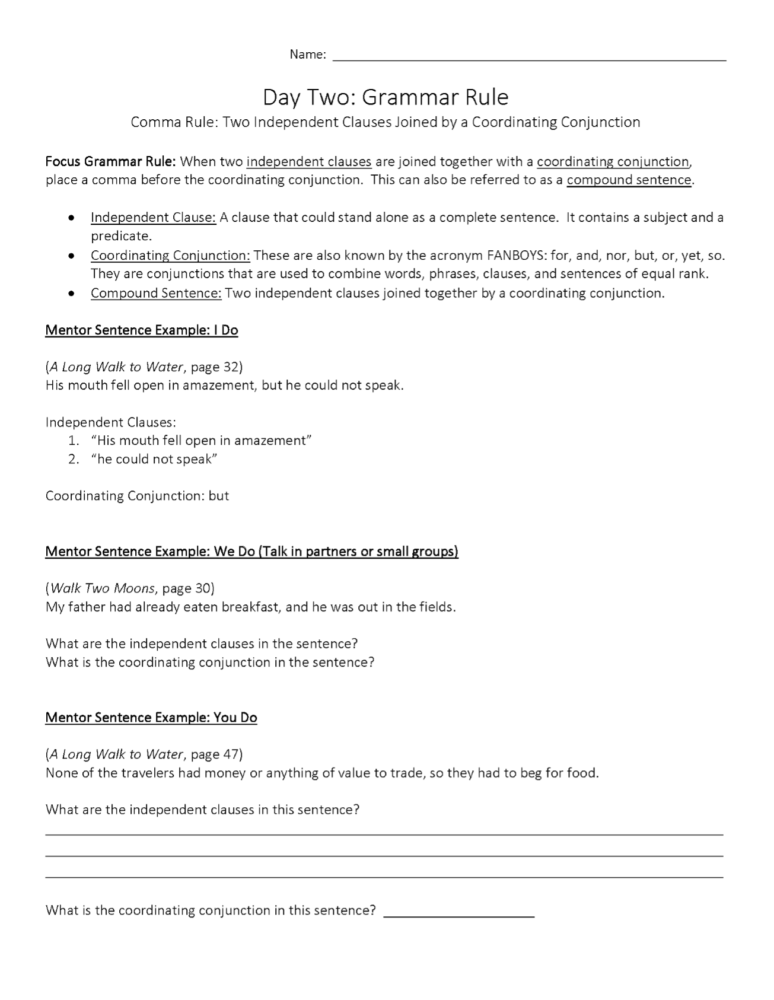
Wednesday: Have students practice the grammar concept using more mentor sentences that show the concept you are teaching students.
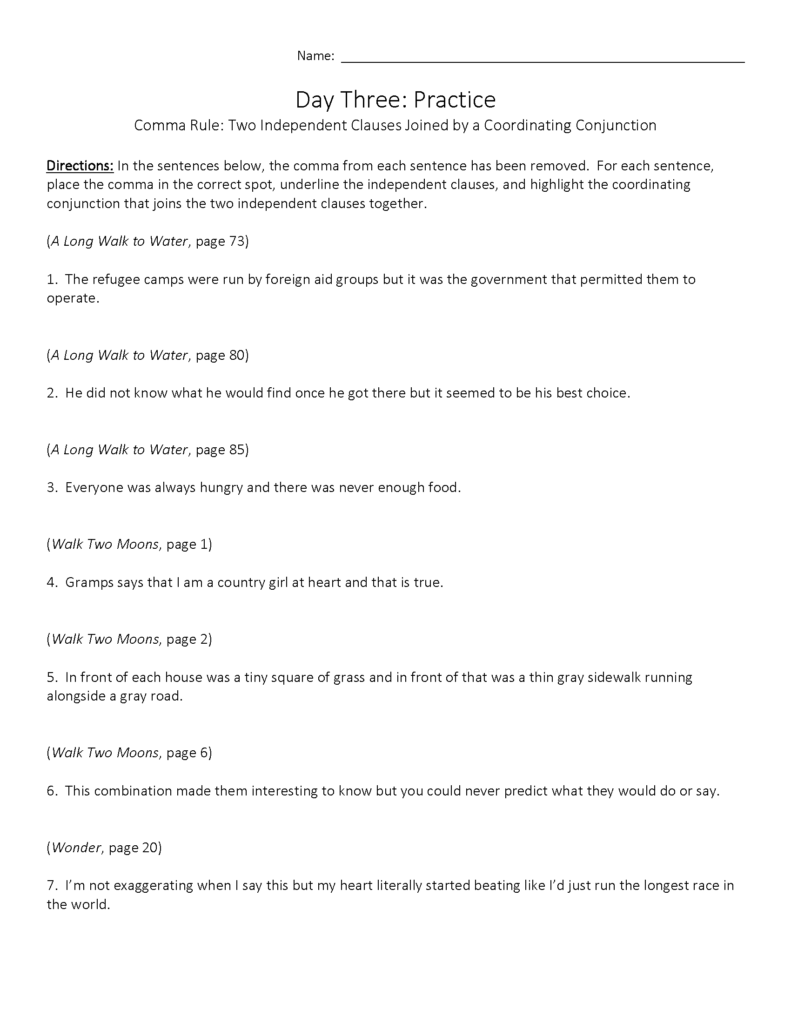
Thursday: Have students discover a sentence in their own reading and write a sentence mimicking a mentor sentence that shows the grammar concept.
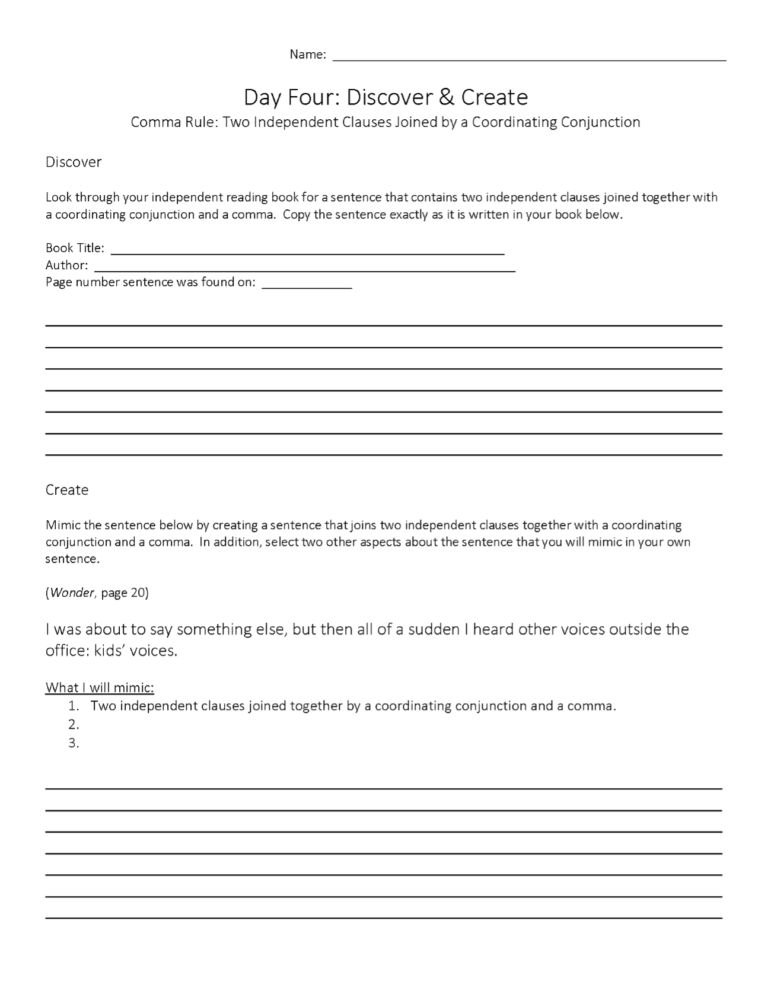
Friday: Assess students to see if they understand the concept.
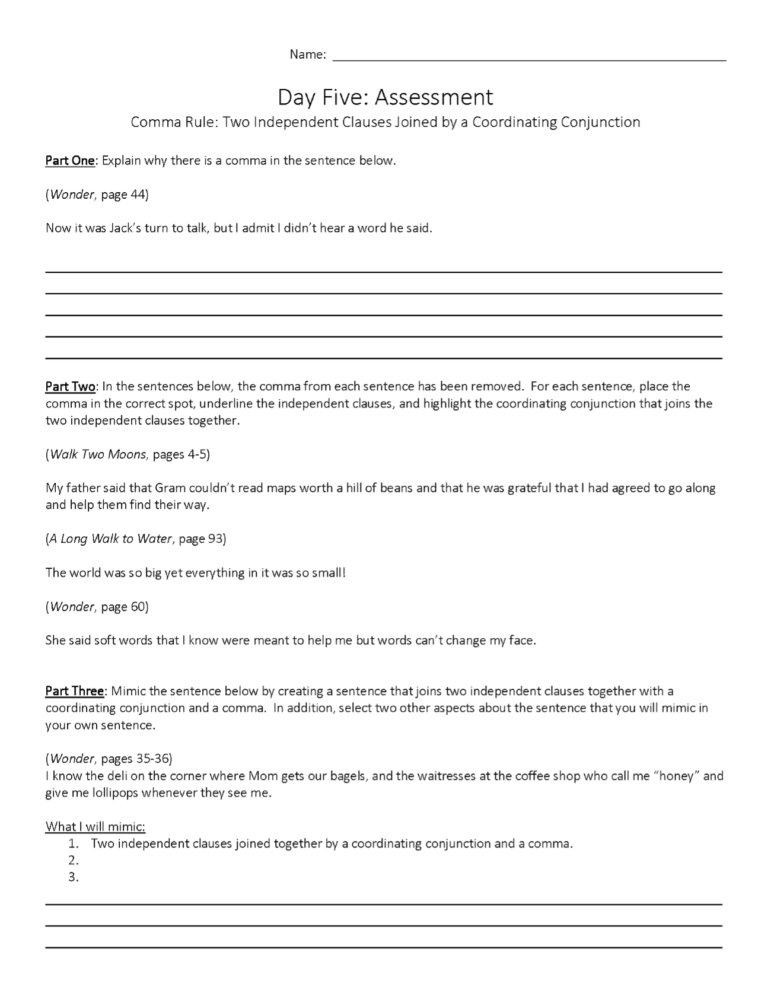
If this format is something that interests you, I have this resource available on my TPT store for comma rules and punctuation. All the work of finding the mentor sentences and writing the questions/activities is done for you!
Idea Four: Mimicking Mentor Sentences Through Writing
For this instructional practice, the teacher finds a mentor sentence from a common reading source such as an interactive read aloud, mentor text from a writing unit, or class novel. Students then write a sentence to mimic what the original author of the sentence did. This is an activity that I would recommend scaffolding. The first time you try it with students, the teacher could model how to do it. The next time, the teacher could do a shared writing with students. After that, students could try it again in partners, and finally, students could try it on their own. It’s a hard concept though to try out without a little practice to develop confidence with it.
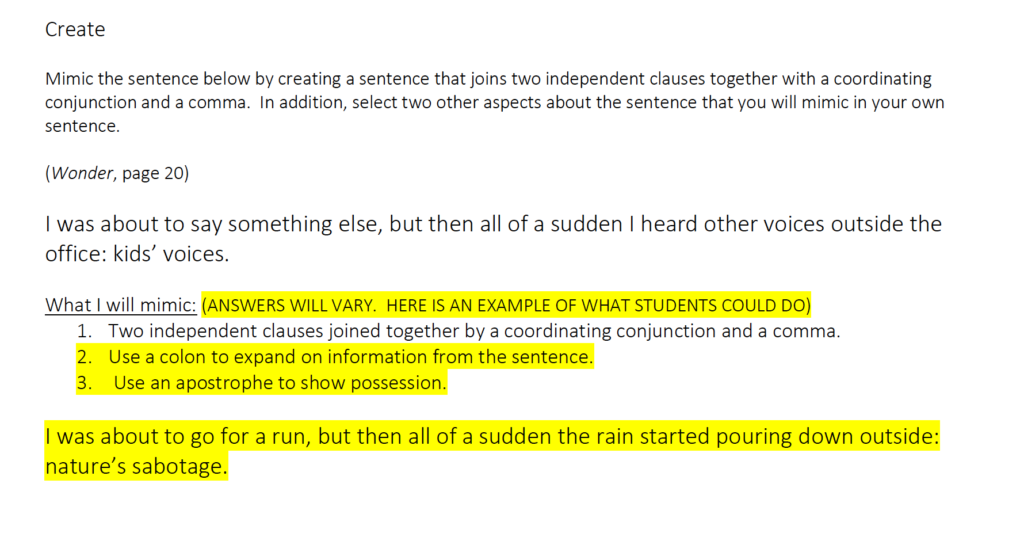
Idea Five: Find Mentor Sentences
Make students into mentor sentence seekers. Once students learn about a specific grammar concept (Example: Commas with FANBOYS), designate a place in the classroom for students to write mentor sentences they find in their reading down on a notecard and tape them up for all students to see. The coolest thing about mentor sentences is when students start to notice sentences that would make great mentor sentences or that follow a specific grammar concept they’ve learned about as they’re reading. That’s when you really know that the concept of mentor sentences is sticking.
Idea Six: Interactive Partner Activity
The last strategy is a fun variation from idea two. How it works is there is a Partner A and a Partner B. Both students start by independently answering one or more questions. Then students “coach” each other through how they answered the questions and revise their original answers as needed. I’ll show you a visual of what this could look like with my Sentence Stalking resource.


As you can see with the example above, Partner A answers different questions than Partner B, and each partner has the answers to the opposite questions. As this process is introduced to students, I recommend using a fishbowl activity to show students what it would look like to coach their partner through the answers versus just reading the answers.
This practice excites me because a lot of learning can happen here. Instead of students independently answering all of the questions and then listening to the teacher go through the answers one by one, students begin with a shorter task and work directly with one other student to go through each answer. This is a great way to mix up what is normally an independent learning task and give students independence and ownership over their learning.
This can be done with any independent learning activity that involves questions and answers where an answer key can be provided. I can see this working well with grammar activities, reading comprehension questions, and vocabulary practice. I start our class period out with Word Study, so this is a natural place where I can incorporate this practice with the activities we already do several time a week.
If you are interested in trying Partner Question Collaboration with your students using Sentence Stalking, click here to download five days for free.
You can also purchase my Sentence Stalking resource by month or as a bundle by clicking here. Each of the 180 days of Sentence Stalking includes a partner question collaboration activity like the one pictured above.
I hope you enjoyed these six ideas for how to use mentor sentences in your classroom and that there is at least one idea that will work for you this school year!





